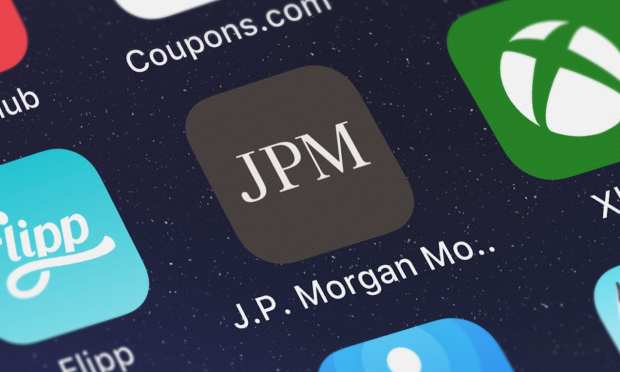JPMorgan’s Mobile Customers Surge 10 Pct; Management Cautious On Economic Environment

J.P. Morgan Chase posted fourth-quarter earnings results on Friday (Jan. 15) that showed the impact from the pandemic and economic headwinds were not as bad as might have been feared earlier in the year – but caution is still warranted. The march toward digital-first banking, meanwhile, continues unabated.
Earnings got a boost from releasing reserves that had been taken earlier in the year to offset anticipated loan losses, freeing up $2.9 billion that accrued to the bottom line. But the bank, as noted in statements by CEO Jamie Dimon, is positioning itself for significant near-term economic uncertainty.
In terms of headline numbers, net income was $3.79 per share, leagues better than the $2.62 a share that had been forecast by analysts. About 72 cents of that tally came from the reserve release.
On a conference call with analysts to discuss the quarter’s results, Chief Financial Officer Jennifer Piepszak noted that the release represents the “resilience” of J.P. Morgan’s overall customer base.
But presentation materials that accompanied the results showed that of the reserve released in the quarter, $900 million came from the consumer side of the book, so to speak, and were released from home lending. Reserves were held flat on the card business, standing currently at $17.8 billion at the end of the quarter. The remaining $2 billion that was released came from the bank’s wholesale operations. That activity ties in with the near-term uncertainty of the economic landscape, said management on the call.
During the question and answer session, asked about the fact that consumer-related reserves (particularly card), Piepszak stated that, as far as government stimulus efforts, the question remains not whether the “bridge is strong enough – [but whether] it’s long enough.” Consumer confidence is still low, she noted, and the next three to six months will be critical in determining what might be done with those reserves. CEO Jamie Dimon stated that economic conditions might improve as vaccine rollouts and stimulus payments continue.
Drilling down into the numbers:
Consolidated net revenues were $29.2 billion, up 3 percent year over year, and better than the $28.7 billion consensus. Overall deposits were up by 7 percent quarter over quarter to $2.1 trillion.
Beyond the trading revenues – which, as would be expected in a volatile stock market environment, were up double digits. Management spotlighted that for the consumer segment, fourth-quarter profit rose 3 percent to $4.3 billion and revenue fell 8 percent to $12.7 billion.
Card average loans stood at $141.2 billion in the quarter, up from $140.4 billion in the third quarter; the net charge-off rate in the card business was 2.1 percent down from 2.9 percent in the third quarter and better than the 3 percent seen a year ago. According to commentary on the conference call, debit spending was up 12 percent; credit was down by 4 percent.
Management said on the conference call that, in further estimates of customer resilience, 90 percent of accounts across its portfolio remain current.
Increasingly Going Digital
Looking ahead, the company will grow its technology investments with a focus on advanced technologies such as artificial intelligence (AI). Asked about the rise of neobanks and buy now pay later (BNPL) options across the banking landscape, Dimon said he’d long been saying that “Silicon Valley is coming” – where, for example, Goldman and others have pushed more fully into consumer banking. But he pointed to JPM’s own “franchise value” as a key competitive asset.
The branch footprint shrank 1 percent to a net 4,908 across the firm, per supplementals; management stated that there is still value in the branch experience (where the company opened 90 locations this past year and will aim to open 150 in 2021).
Digital efforts remain a key focal point. CFO Piepszak stated that 69 percent of the bank’s customers are “digitally active” and, with a nod toward certain business activities that have moved online, said that as many as 80 percent of check deposits in the quarter were done via QuickDeposit. In the home lending segment, the company saw two-thirds of applications done digitally. Overall, the company saw 10 percent growth in its active mobile customer base to 40.9 million individuals. Total active digital customers, according to materials, were up 5 percent to 55.3 million.
